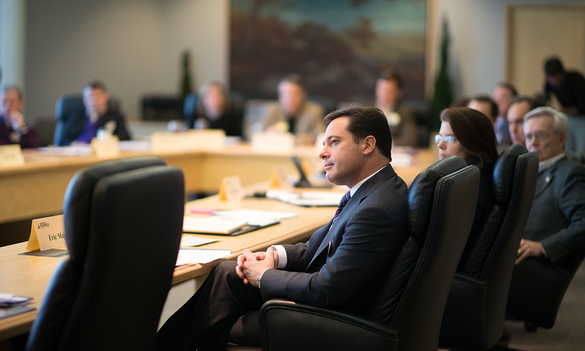We are often asked by vendors about if (or when) they should conduct a Partner Advisory Council (PAC). The reason for this question is due to the fact that many have had mixed experiences or success with PAC’s in the past. In this article we look at some ideas around how a PAC can work most effectively, both from a vendor and a partner perspective.
As a starting point we need to look at the role or function of a PAC. Why would a vendor want one and why would a partner want to participate in one?
Vendors
For vendors, depending on their size and channel maturity, generally the reasons for wanting a PAC are:
- To gain feedback from partners on a range of things such as programs, products, customers, market opportunity etc
- To be seen as inclusive rather than just imposing decisions on partners without consultation
- To expose non channel centric stakeholders to the needs of the partners in order to drive desired business changes more smoothly
- To create better alignment (financial, technology, engagement, customer satisfaction etc.) between the vendor and the partner
- For political reasons, by vested interests both internally and externally, including all of the above
Partners

Purpose
As a starting point we would recommend that the PAC is included as part of the overall partner program structure. Additionally, that partner membership on the PAC is presented (both internally and externally) as an additional benefit of participation in the a vendor’s partner program.
A PAC should be an ongoing and regular (2-3 per annum) event where vendors and partners meet to exchange ideas around continuous improvement of channel alignment, including the Partner Program. As a vendor if you just want feedback on a particular item, idea or initiative at a point in time, then consider independent research, a facilitated workshop or break out meeting at a planned partner event.
To be able to deliver on this purpose the charter and membership of the PAC needs to clearly outlined and considered. Having a written charter that reflects the (current) purpose is a good start. Where we see PAC’s becoming ineffective or worse dysfunctional, it is generally because the various members don’t have a common direction or charter. This can result in the PAC just becoming a whinge session from both sides, with little or no progress being made on alignment.
Membership
Once there is a clear charter that reflects the purpose, then the right parties can be selected for both vendors and partner participants. We don’t generally suggest a specific membership size, as that is usually a function of the vendor or size/number of partners in the program and the complexity of the program itself. However, as a guide, the number of partner participants must be representative of the program – ie. a selection of partners from the top tiers (eg. Platinum, Gold and maybe Silver) partners, and perhaps a distributor to represent the Registered tier. If there are significant targeted verticals, partner certifications or specialisations, then a representative balance across these areas should also be sought.
As for job function, it is often most productive if membership is offered to senior or even executive management, as the PAC should primarily be focused on business issues. Additionally, if there are actions arising from a PAC decision, then the PAC member must have the authority to be able to act on the decision.
Meetings and Follow Up
Meetings need to be planned and scheduled well in advance if you expect senior management to participate. Also, having an agenda circulated well before an upcoming meeting is essential, as is someone taking minutes and noting actions that may arise. Minutes need to be distributed as soon as practical after the conclusion of a PAC, and issues need to be actioned ASAP. One of the most frustrating aspects of a PAC, and the primary reason for their failure, is if participants feel they have spent a day providing feedback and don’t see any action afterwards.
Facilitation
It is a good idea if there is a meeting chairperson (this can be a rotating PAC member or an independent experienced facilitator) that can help guide and facilitate the meeting. There will almost always be differing opinions and points of view, both relevant and irrelevant being raised, and the facilitator helps to mediate these and keep the meeting on track. Keeping control of the meeting agenda while still encouraging ideas in an open and frank discussion is a skill that not everyone has, so before appointing the chairperson or facilitator, ensure they are the right fit for the PAC objectives and participants.
Conclusion
A well run PAC should plan, discuss, collaborate, document and act to ensure continued channel alignment between vendor and partner. When done well, a PAC can be the difference between a high performance partner program with progressive vendor/partner relationships, and a “difficult to do business with” vendor that is reactive and constantly having to fight partner fires. I am pretty sure I know which one you would rather be.


